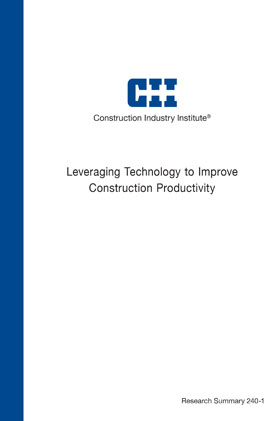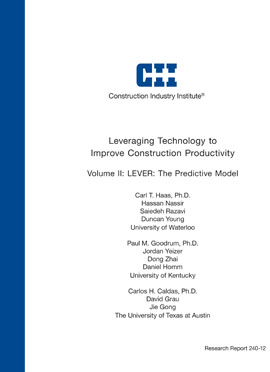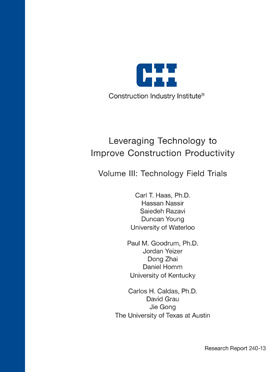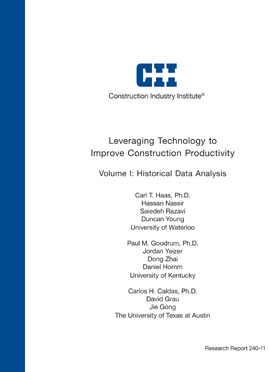
Leveraging Technology to Improve Construction Productivity
Successful use of technology to improve construction productivity involves more than the technical characteristics of the technology. Many factors simultaneously have an impact on construction productivity, including work force characteristics and management practices as well as innovations in technology. To control for such external factors, a threepronged approach was used in this study to develop recommendations, guidelines, and procedures for effectively leveraging technology to improve construction productivity.
First, the study examined how historical changes in construction equipment, materials, and information technologies influenced improvements in construction productivity. Historical data that were analyzed demonstrated significant improvements in labor productivity. The improvements were primarily due to changes in the functional range of construction equipment, reductions in unit weight of selected construction materials, and the automation and integration of project information systems. Labor productivity improvements associated with the use of these technologies ranged from 30-45 percent.
Second, a field test of materials tracking and locating technologies was conducted to measure how using such technologies can improve productivity on prototypical CII construction projects. Radio-frequency identification (RFID) tags and a Global Positioning Satellite (GPS) system were used to track materials in lay down areas for two CII member projects, one in the U.S. and the other in Canada. The field test showed that not only did improvements in material tracking improve productivity at the construction workface and the retrieval of materials in the lay down areas, but also improved the predictability and reliability that materials would be available when needed.
Third, a four-stage predictive model that estimates the potential for a technology to have a positive impact on construction productivity was developed and validated. The model combines results from historical analyses and the field tests into a tool that can be used as a predictor of how future technologies might perform. The model was used to develop performance scores based on a historical perspective of 28 technologies.
The technologies were selected to represent cases where construction jobsite implementation was: (1) successful, (2) inconclusive, or (3) unsuccessful. Statistical analysis confirmed that average performance scores produced by the model were significantly different across these three categories. The model was then used to develop a list of promising emerging technologies.
In summary, this research project has demonstrated with significant statistical analysis, field trials, and tool development how technology can be used to leverage productivity.



